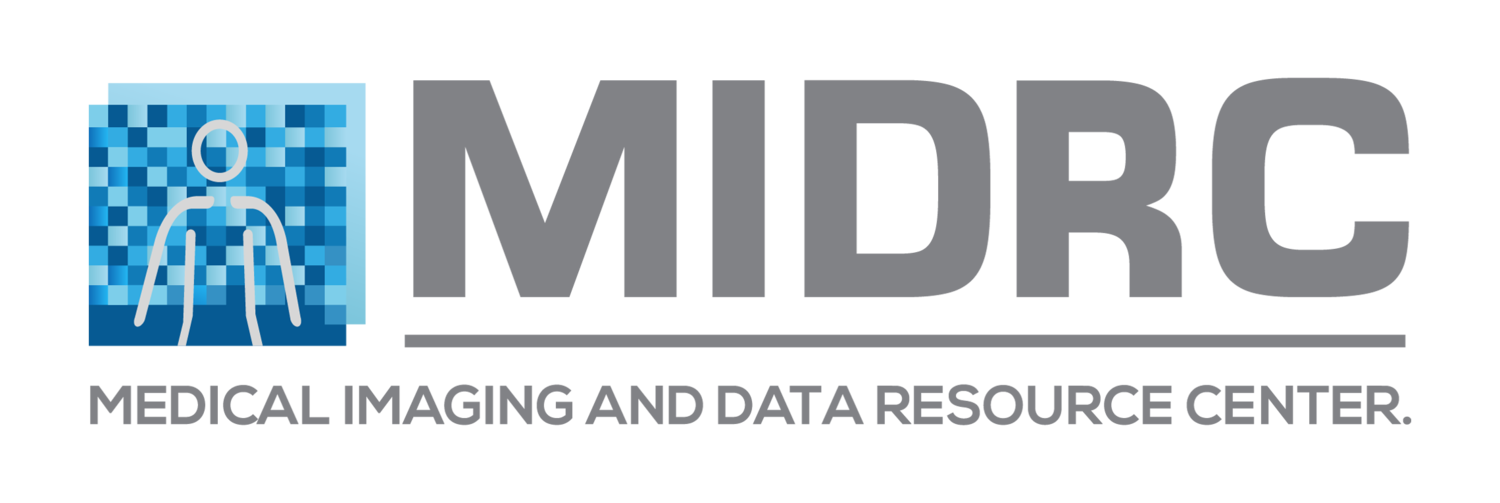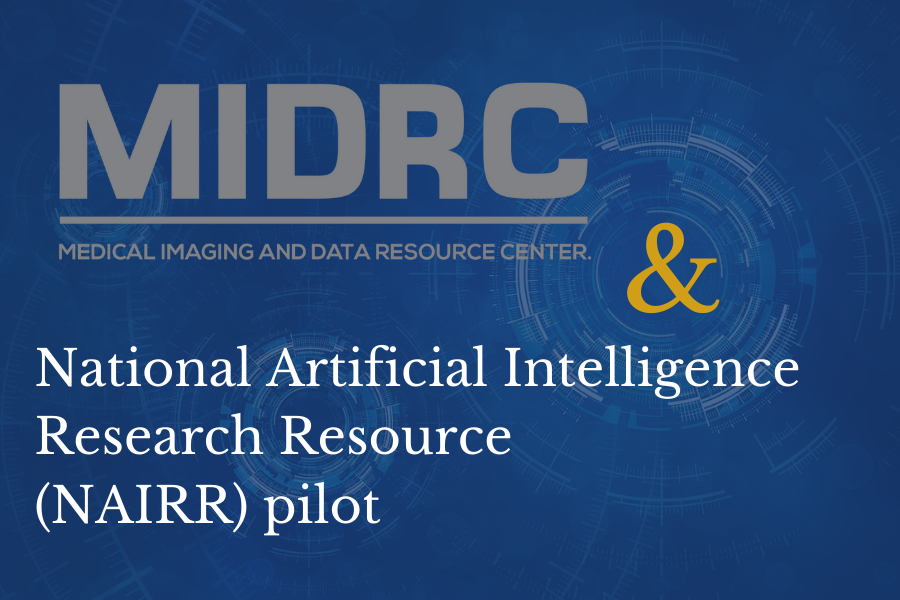Pivoting to cancer, ‘long COVID’, and other chronic diseases.
Last updated April 16, 2024
Welcome to the Medical Imaging and Data Resource Center (MIDRC).
What is new! In January 2024, the U.S. National Science Foundation and collaborating agencies launched the National Artificial Intelligence Research Resource (NAIRR) pilot, and selected MIDRC to participate in this project to build national AI research infrastructure. In September 2023, MIDRC was selected as one of several performers for the ARPA-H Biomedical Data Fabric (BDF) Toolbox. Also, MIDRC just won one of the ‘2023 Dataworks!’ prizes! Check back often for more exciting new MIDRC projects and developments.
MIDRC is a multi-institutional collaborative initiative driven by the medical imaging community that was initiated in late summer 2020 to help combat the global COVID-19 health emergency. MIDRC is aimed at accelerating the transfer of knowledge and innovation in the COVID-19 pandemic and beyond. MIDRC, funded by the National Institute of Biomedical Imaging and Bioengineering (NIBIB) and hosted at the University of Chicago, is co-led by the American College of Radiology® (ACR®), the Radiological Society of North America (RSNA), and the American Association of Physicists in Medicine (AAPM). The aim of MIDRC is to foster machine learning innovation through data sharing for rapid and flexible collection, analysis, and dissemination of imaging and associated clinical data by providing researchers with unparalleled resources.
Leveraging the existing and developing infrastructure provided by the participating organizations, MIDRC serves as a linked-data commons that coordinates access to data and harmonizes data management activities at three critical stages: (1) intake, including curation, de-identification, abstraction, and quality assessment, (2) annotation and labelling of images and other data using semi-automated approaches, and (3) distributed access and query methods. MIDRC receives medical images and associated metadata through intake portals at the RSNA and ACR, and then, through a Data Commons Portal on the Gen3 Data Ecosystem, enables a single public access point for data discovery. The MIDRC collection is linked through secure services and a common query infrastructure and allows additional data sources to be incorporated over time. The imaging data is being collected from multiple sources including academic medical centers, community hospitals, and others, and the resources offered by MIDRC are open to registered users according to the data use agreement.
Through 2023, MIDRC focused on medical imaging and data of COVID-19 patients, and the imaging studies made available to the public have mainly been chest imaging. Currently, however, MIDRC is pivoting to cancer imaging. Also, in order to keep up with developments in the pandemic, imaging studies associated with post acute sequelae of COVID-19 (PASC, ‘long COVID’) are actively being collected as well as different imaging modalities and various additional organ systems (such as the heart or brain).
Current work includes the expansion to become a wider comprehensive resource for all Institutes at NIH, with focused medical imaging data commons of chronic disease (e.g., cancer, diabetes, chronic liver disease, coronary artery disease, COPD and emphysema), and other infectious pandemics. Additionally, the sequestering of part of the MIDRC data in a separate data commons not accessible to the public for validation and testing will provide a valuable resource for data science challenges and a path to long-term sustainability through industry support for translation to - and approval of - clinical use which will impact public health worldwide. Learn more…
Questions? Check out our answers to frequently asked questions!
How to acknowledge 1) MIDRC funded research and 2) use of data downloaded from the MIDRC Data Commons
Find us on our YouTube Channel, Twitter, LinkedIn, and GitHub to stay informed about all things MIDRC and sign up for our newsletter!

















